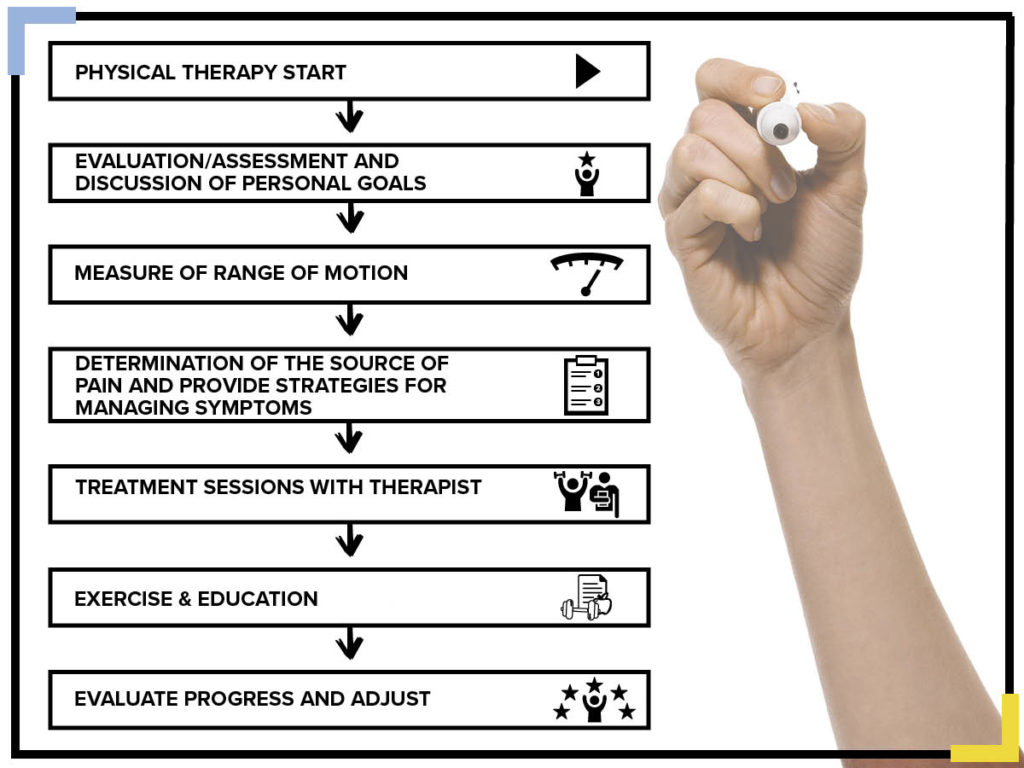by Keri Rogers PT, DPT (Board Certified Orthopedic Clinical Specialist/Fellow, American Academy of Orthopedic Manual Physical Therapists)
What is Physical Therapy? Physical Therapy (or PT) is a profession that is centered around minimizing pain and improving function. Physical therapists are licensed health care professionals who are qualified to treat people of all ages and abilities across a variety of practice settings. Physical therapy can be performed at an outpatient facility, in a hospital or nursing home, in the school setting, or at an individual’s home. It can treat many different conditions including injuries to muscles, different types of arthritis, difficulty with walking or balance, dizziness, headaches, or weakness following a stroke. Physical therapy can also help individuals to recover following illness or surgery.
According to the American Physical Therapy Association website, choosept.com, “Physical therapists identify, diagnose and treat movement problems. They help people maintain or restore as much function as possible.”
Physical function and movement are very important to:
- Health, wellness, and fitness
- Managing pain
- Earning a living
- Independence”
Who Needs Physical Therapy?
The short answer is-EVERYONE! PT is not just for athletes or for people who have had surgery. It is not just for older adults. Everybody needs to be able to move to perform daily activities. Any person who is experiencing pain has modified their functional activities or would like to be able to exercise better and prevent injury would benefit from physical therapy.
Some of the physical benefits of physical therapy include:
- Improved mobility and strength
- Improved balance and agility
- Reduced pain
Physical therapy may also reduce the need for medication, delay or help avoid surgery, improve sleep, and can improve cardiovascular health. Physical therapy can help you to move better, feel better and do more! Whether you want to run faster, walk longer, throw a ball with your dog or grandchild, lift weights or work in your garden, physical therapy can help you to achieve your goals.
What Does Physical Therapy Look Like?
Physical therapy treatment will look different for each person. A patient will be evaluated by a licensed physical therapy likely holds a doctorate degree. At an initial evaluation, the physical therapist will perform an assessment and discuss your personal goals. The physical therapist may measure your range of motion and strength and will watch how you move. If you are experiencing pain, the physical therapist will seek to determine what the source of pain is and will provide you with strategies for managing your symptoms. Treatment sessions may include manual therapy or hands-on treatment provided by the therapist. Exercise and education are also important components of physical therapy treatment. However, exercise should be specific to the individual patient’s fitness level, needs, and goals. Throughout a physical therapy plan of care, which is usually several weeks or months, the physical therapist will evaluate the progress that you have made towards your goals and adjust treatments accordingly.

Physical Therapy Treatment May Include:
- Manual Therapy
- Hands-on treatment to target muscles and joints
- Exercise
- Stretches and range of motion exercises
- Strength Training
- Cardiovascular Exercise
- Balance and Gait Training
- Activities that improve balance, walking, and safety
- Functional Training
- Lifting and Carrying
- Squatting
- Stairs
- Education
- Pain Management
- Home Exercise Program
- Sleep Habits
Physical therapy treatment sessions usually occur 2 or 3 times (visits) per week for a period of 4-6 weeks. Physical therapy is completed when the patient has made optimal functional progress and has met their goals.
How Can I Receive Physical Therapy?
Physical therapy is a health care service that is covered by insurance. Most people are referred to physical therapy by a medical doctor. However, in most states, an individual can begin physical therapy treatment without a doctor’s prescription so they only need to request an appointment. You may want to check with your individual insurance regarding referral to physical therapy.
